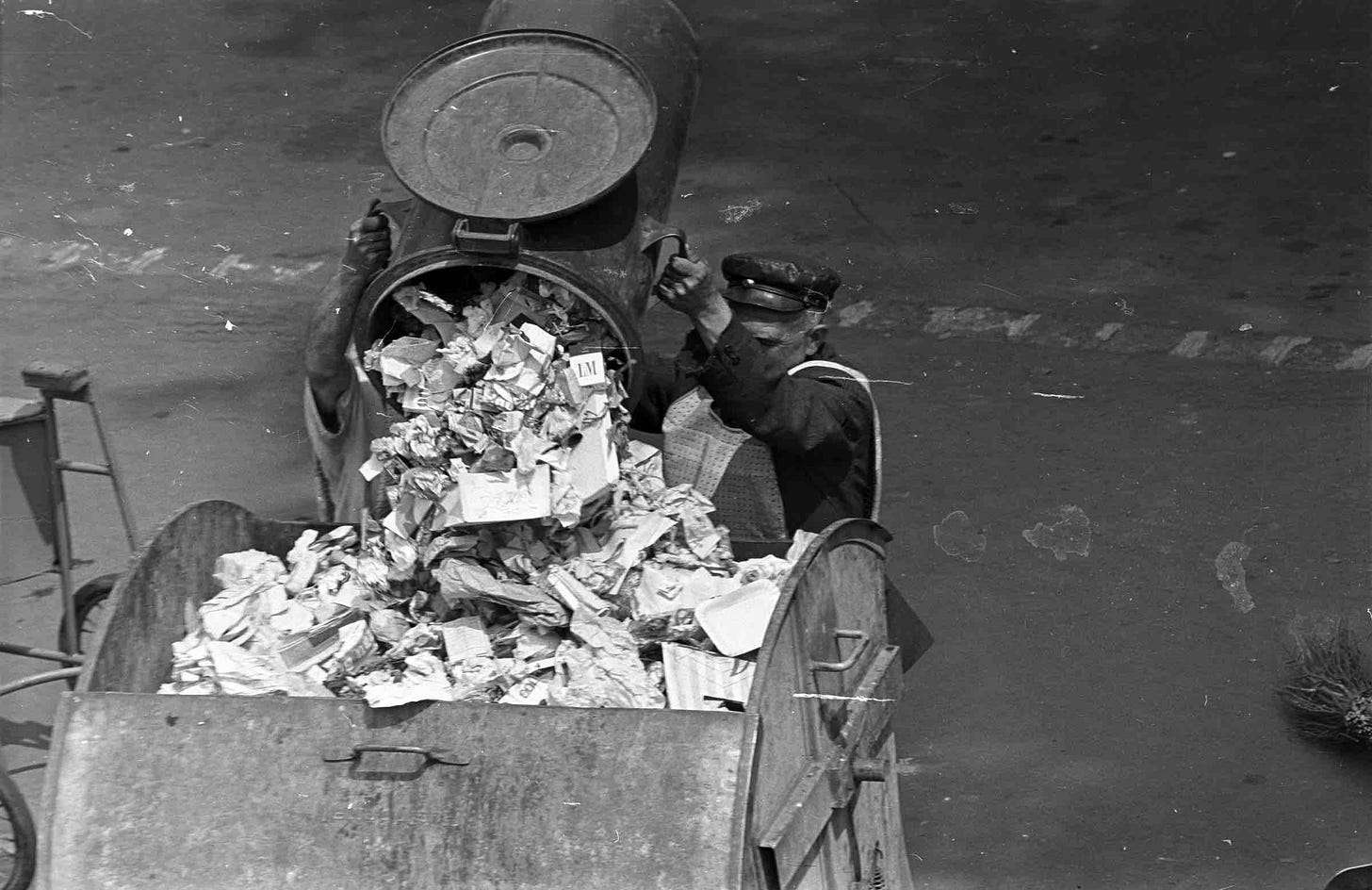Life’s a mess. So is your computer
I reconfigured my hard drive
I deleted my hard drive. Completely. On purpose. It had to be done. It was overcrowded not just with my files but also with hidden, mysterious data—the debris transferred from old computers to new ones as processors, operating systems, and programs changed. My documents, my life’s work: a mess born from the contingencies of beginnings, roughly sorted, barely manageable.
Of course, I made backups beforehand, both in the cloud and on an old-fashioned external hard drive. But I was determined to set everything up from scratch, equip my Mac with a newly installed operating system, organize it well, and make it functional again. The moment just felt right—a new position, clarity about upcoming writing projects, and, uhm, AI.
I believe knowledge work with computers is changing for the third time. The first stage was the introduction of the graphical user interface, with folders and documents as we already knew them from the analog world. The second stage consisted of indexing and sophisticated search functions that allowed users to find relevant files easily. In the third stage, distinct documents are sinking into a sea of data from which AI can pull out and prepare the necessary information at any time. What does this mean for my Mac? Does it even make sense to sort data manually anymore?
Building one’s own workflow carries the risk of creating a mental construct that falls apart under the entropy of life. Tinkering with overhead can quickly become a pretext for procrastination that distracts from creative work. So, does AI free us from what I did last weekend: conceptualizing a personal information architecture and going through the never-trouble-free hassle of reconfiguring your computer? Or do valuable thinking and writing operations get lost when humans surrender to artificial intelligence algorithms?
Learnings from a radical reset
When I opened my Mac after reinstalling the operating system, the relief of a clean slate quickly mingled with the strange feeling that this was no longer my computer. Nothing worked the way I was used to and wanted it to. I immediately began adjusting the settings and transferring data from my backups. I tried to turn the computer back into a personal computer, becoming part of my extended mind. It became clear to me that a world of context-free, ephemeral interfaces will no more prevail than hot-desking in interchangeable open-plan offices. Non-lieu may be conducive to busyness; deep work and creativity, however, require an environment personalized in some way and individually appropriated tools.
From a technical perspective, my undertaking was a success: I gained about 40 GB of free storage space. And I certainly do not want to return to the confusing fragmentation of my old hard drive. However, throwing all data into a single folder and letting AI sort and structure it doesn’t appeal to me either. Maybe this is just a habit, and future generations or even a future me will work that way. For now, it just doesn’t seem to be in sync with how deep work happens, so I chose a different information architecture.
An information architecture for creative knowledge work
The setup I finally established is based on distributing documents into a handful of generally named folders (like „Author“, „Research and Teaching“, „Administration“). Added to this is a folder with overarching foundational documents („Ground Work“) and one I call „Material“, which contains only files I didn’t write myself (usually PDFs of articles). I can browse the latter for individual projects using the search function. Within the general folders are specific, topic-related keystone folders, e.g., for my books or lectures. Inside those are the actual files.
At the core of every keystone folder I maintain “idea documents” (a term I borrow from Cal Newport): open text files where I throw in everything that comes my way on a topic that interests me and could potentially become a post, a paper, or a book (like real world observations, thoughts, quotes, links, etc.). The advantage of this data type is that you don’t impose too strong a pre-structure (the thinking process remains open and in motion) and work „actively“ instead of just engaging in ad hoc dialogue with AI. Deep, potentially original work consists of a combination of push, pull, and serendipity elements. Push: deliberately sticking with a topic over a longer period of time so that things work subconsciously and can be thoroughly thought through; pull: targeted, project-related research using libraries, search engines, and AI (as well as, of course, conversations with people, observations etc.); serendipity: irritating or stimulating discoveries in areas unrelated to the current thought process (while walking through the city, in a bookstore display, when watching a film, traveling, talking with a chance acquaintance…).
Nothing speaks against relieving algorithmization (I will share a few concrete hacks I found helpful in next week’s POSTCARD). However, automation only makes sense as long as it clears the way for the challenging core work that no computer can take over, and that is based on trusting one’s own thinking. Knowledge and creative work ultimately come down to creating new perspectives on the world and new ways of speaking. They consist of a delicate balance between collecting and structuring, systematic process and random encounters. The right amount of automation prevents getting lost in the details. The right amount of friction prevents superficial completion. The art lies in establishing a workflow in the delicate triangle of world, mind, and computer that supports this special form of existence.


